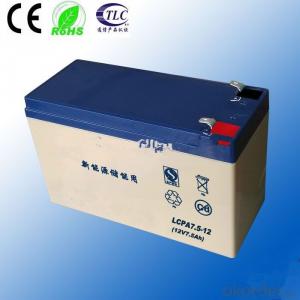Eps Solar Inverter
Eps Solar Inverter Related Searches
100w Solar Panel With Inverter Best Solar Panel Inverter 5000 Series Cast Aluminum Plate Portable Solar Panel Inverter First Solar Series 6 Module 12 Volt Solar Panel Inverter Plastic Solar Lanterns Buy Solar Panel Inverter Solar Panel Inverter Cost Solar Panel Without InverterHot Searches
Type Of Inverter For Solar Types Of Inverter For Solar Used Solar Inverter For Sale Inverter Size For Solar System Solar Edge Inverter For Sale 5kw Solar Inverter For Sale Solar Inverter For Sale Solar Inverter For Battery Solar Inverter For Split Ac Solar Inverter For Laptop Solar Inverter For Fridge Solar With Inverter Price Solar Inverter With 2 Battery Solar Inverter Price In China Best Solar Inverter In China Solar Inverter Price In Dubai Solar Inverter Price In Uae Solar Inverter Price In Kenya Solar Inverter Price In Kerala Solar Hot Water Collectors For SaleEps Solar Inverter Supplier & Manufacturer from China
Okorder.com is a professional Eps Solar Inverter supplier & manufacturer, offers integrated one-stop services including real-time quoting and online cargo tracking. We are funded by CNBM Group, a Fortune 500 enterprise and the largest Eps Solar Inverter firm in China.Hot Products
FAQ
- Yes, a solar inverter can be used with a grid-interactive system. In fact, a solar inverter is an essential component of a grid-interactive system as it converts the DC (direct current) electricity produced by solar panels into AC (alternating current) electricity that can be used to power homes or businesses and also fed back into the grid. The solar inverter also manages the flow of electricity between the solar panels, batteries (if present), and the grid, ensuring efficient and safe operation of the grid-interactive system.
- Yes, a solar inverter can be used in systems with different module voltages. Solar inverters are designed to convert the direct current (DC) generated by solar panels into alternating current (AC) that can be used in the electrical grid or for powering appliances. They are equipped with maximum power point tracking (MPPT) technology, which allows them to adjust and optimize the voltage and current output to match the specific voltage requirements of the solar panels. This flexibility enables solar inverters to work efficiently with various module voltages, making them compatible with different solar system configurations.
- Yes, a solar inverter can be used with a smart home system. Smart home systems are designed to integrate with various devices and technologies, including solar inverters. By connecting a solar inverter to a smart home system, users can monitor and control their solar energy production, track energy consumption, and optimize energy usage based on real-time data. This integration allows for increased energy efficiency and convenience in managing solar power within a smart home environment.
- The cost of a solar inverter can vary depending on the brand, size, and features. On average, a basic solar inverter can range from $500 to $2000. However, more advanced or larger capacity inverters can cost upwards of $5000. It is important to consider the quality and efficiency of the inverter when determining its cost as it plays a crucial role in the overall performance of a solar power system.
- The role of a DC-DC converter in a solar inverter is to convert the direct current (DC) generated by the solar panels into the appropriate voltage and current levels required for the inverter to convert it into alternating current (AC) electricity. The DC-DC converter ensures efficient power transfer and enables the solar inverter to maximize the energy harvested from the solar panels. Additionally, it helps regulate the voltage levels and maintain the stability of the solar power system.
- Yes, a solar inverter can be connected to a battery backup system. In fact, this connection is essential for storing excess solar energy generated during the day and using it during times when the sun is not shining, such as at night or during power outages. The battery backup system allows for uninterrupted power supply and greater energy independence.
- The role of reactive power control in a solar inverter is to manage and regulate the flow of reactive power in the electrical system. It helps to maintain a stable voltage level, improve power factor, and ensure efficient operation of the solar inverter. By controlling reactive power, the inverter can mitigate voltage fluctuations and provide optimal power quality, making the system more reliable and compliant with grid requirements.
- PV grid-connected inverter and independent inverter in the control of what is the difference
- PV grid-connected inverter in the grid before the inverter needs to determine the phase voltage phase frequency, the first phase-locked, in the grid and power generation.












































